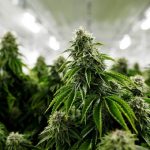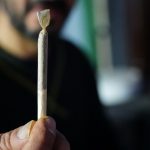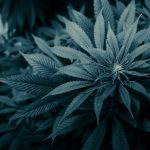U.S, January 13, 2020 (GREENENTREPRENEUR) It really depends on your tolerance and what conditions you are treating, but here we remove some of the dosing mystery.
The brave new world of cannabidiol or CBD-infused products is growing. That means more product choices and accessibility for the consumer. It also means a wide array of recommended doses.
One of the most important components of any CBD product’s ingredient label is the potency in milligrams that product contains. This potency, when divided by one serving, will equal one dose. So what does this CBD milligram potency mean? And how do you know you’ve found the right dose for your body and particular ailment?
CBD affects everyone differently because everyone’s endocannabinoid system is different. Your perfect dose depends on your body size, weight, age, gender, and even how much food and water you have consumed. It is important to consult your doctor to find out if CBD is right for you.
That being said, here is the existing data on dosing, alongside my own experience using verified CBD products for many years.
What’s A Low Dose?
For inflammation, sleep aid, pain relief, research shows a lower dose can be helpful for most people. One German 2016 study found that low doses helped with “antioxidative, anti-inflammatory, and neuroprotection effects.”
How much is a low dose? Many products suggest you begin at a dose around 10 milligrams to 25 milligrams. In the case of a tincture, it is one dropper-filled. In the case of capsules, it is one capsule.
This is a low-ball dose. In my experience, the more potent the CBD in milligrams, the more you feel its beneficial effects for pain relief, sleep aid, and inflammation. For me, that dosing scale could begin at 50 milligrams per dose. But I have used CBD for a significant amount of time so my tolerance and endocannabinoid system could be different than yours. Listen to your body.
What’s A High Dose?
Higher doses of CBD have been found to aid in treating conditions ranging from psychiatric disorders such as schizophrenia and dementia to Type 2 diabetes and nausea.
For anxiety, one 2018 study found the CBD dosage that helped participants the most is 300 milligrams. It found that 150 milligrams and 600 milligrams didn’t work as well for anxiety as 300-milligram doses did, which hit its participants in the center as “just right.”
Can you overdose? Research seems to suggest, no. One study found up to 1500 milligrams of CBD can be well-tolerated by humans and taken daily. That said — it’s always wise to start low and go slow. While existing data shows very little negative reactions of CBD with other drugs and that CBD is seen as a relatively safe treatment option, more studies are needed to be conclusive on all of the long term risks.
Where To Start?
You can always start off with 10 to 25 milligrams and go up from there until you achieve your desired effect. Journaling and taking notes in a daily planner of how many milligrams you take is one helpful tool when looking for your CBD sweet spot.
In my opinion, most CBD tinctures and products on the market today don’t have a very high CBD potency. There are companies with higher dosages offerings on the market. One option is Colorad-based CBD producer Steve’s Goods, which offers dosages upwards of 3000 milligrams per bottle.
When it comes to topicals, I gravitate towards even higher CBD milligram doses. CBD needs to be super-potent on its own to work transdermally. My personal sweet spot dose for topicals is 300 to 500 milligrams. If you’re lucky enough to have access to a medical or adult-use market, then CBD in conjunction with THC and CBN, other cannabinoids, will work better. This is due to the “entourage effect.” When you do add THC, and the potency can be lower for the CBD ingredient and still work wonders.
Keep in mind: CBD takes time to notice. In some cases, it could take a month of regular use to feel its benefits. The feeling of CBD is not a feeling, but more the absence of one; the absence of pain, the absence of inflammation.







